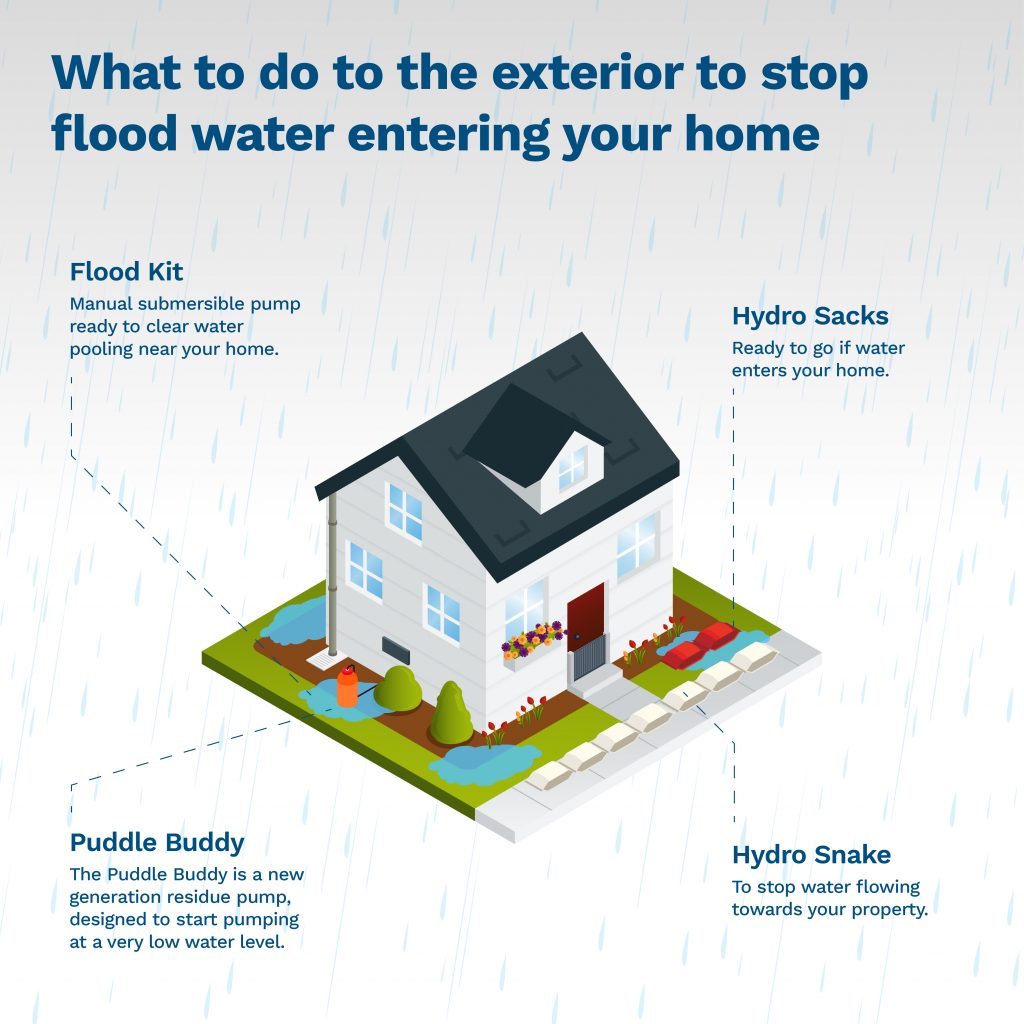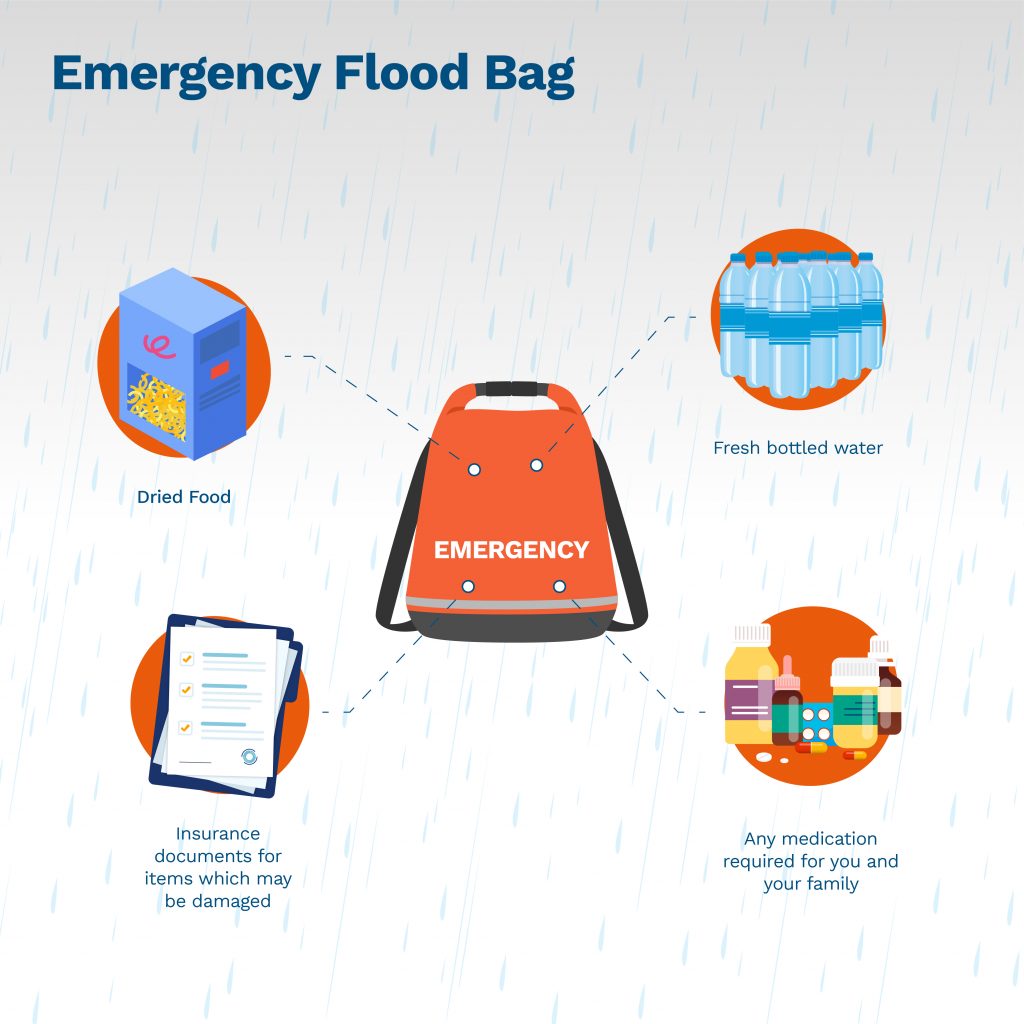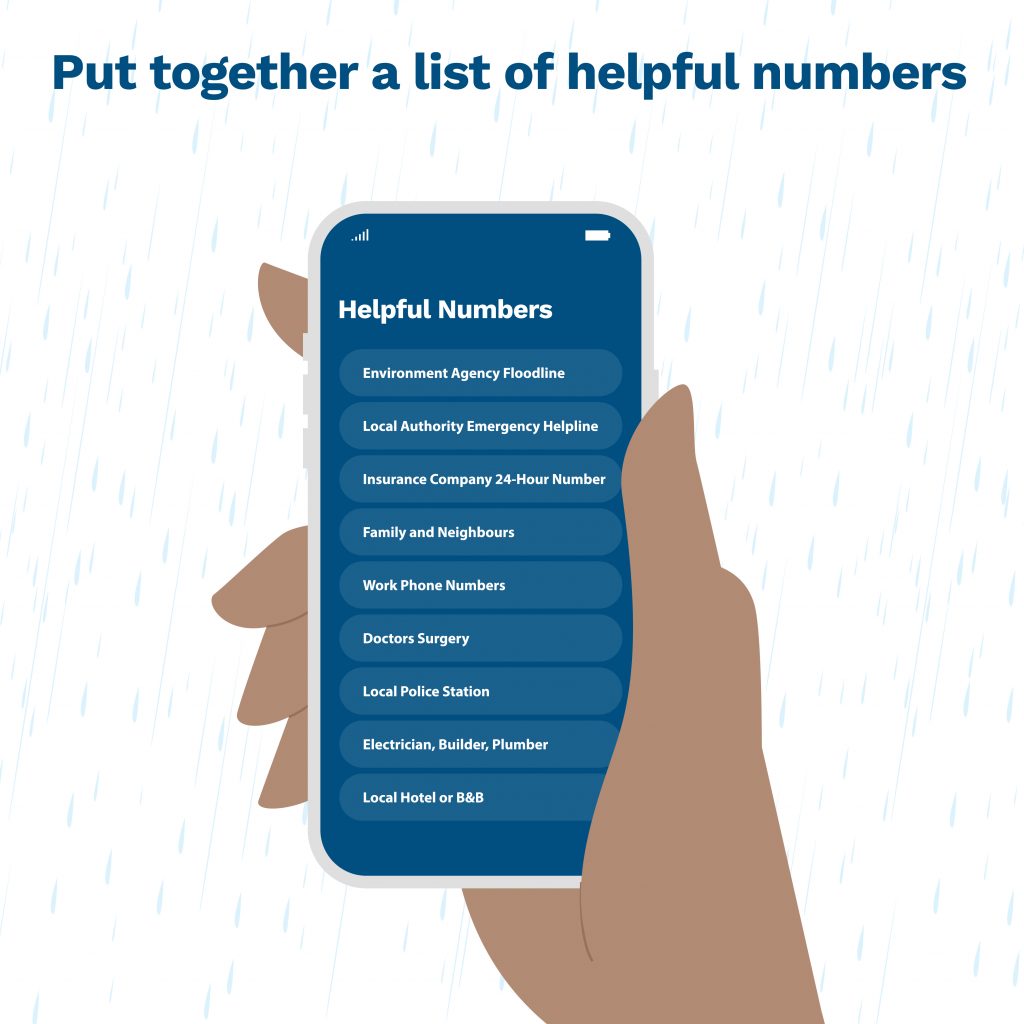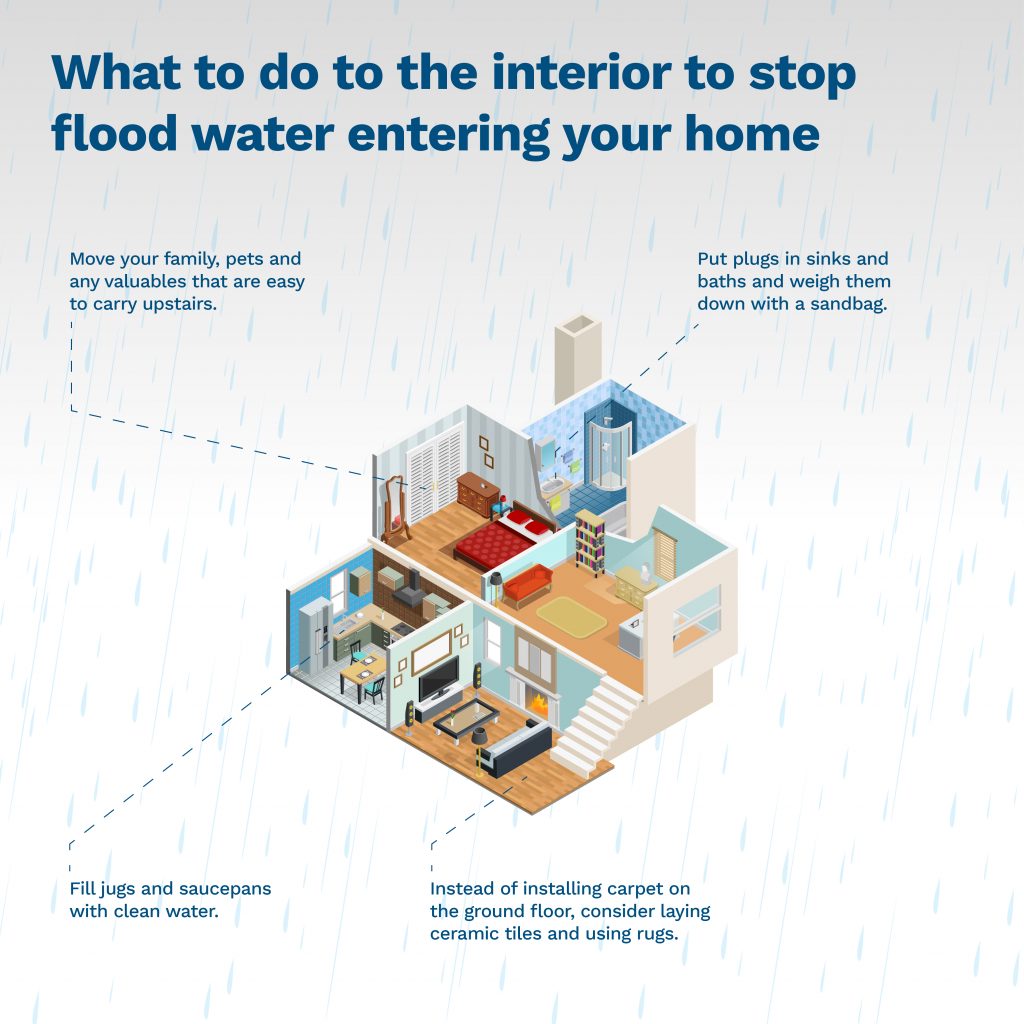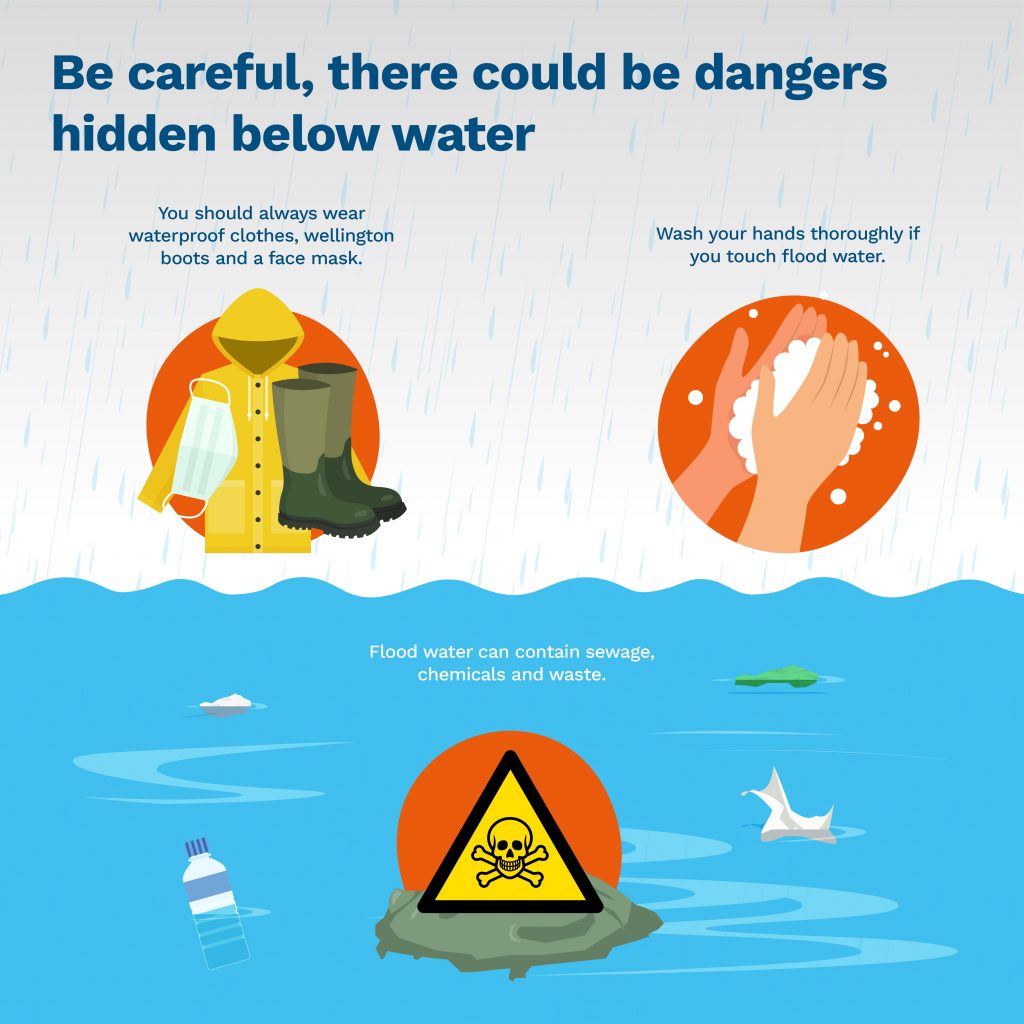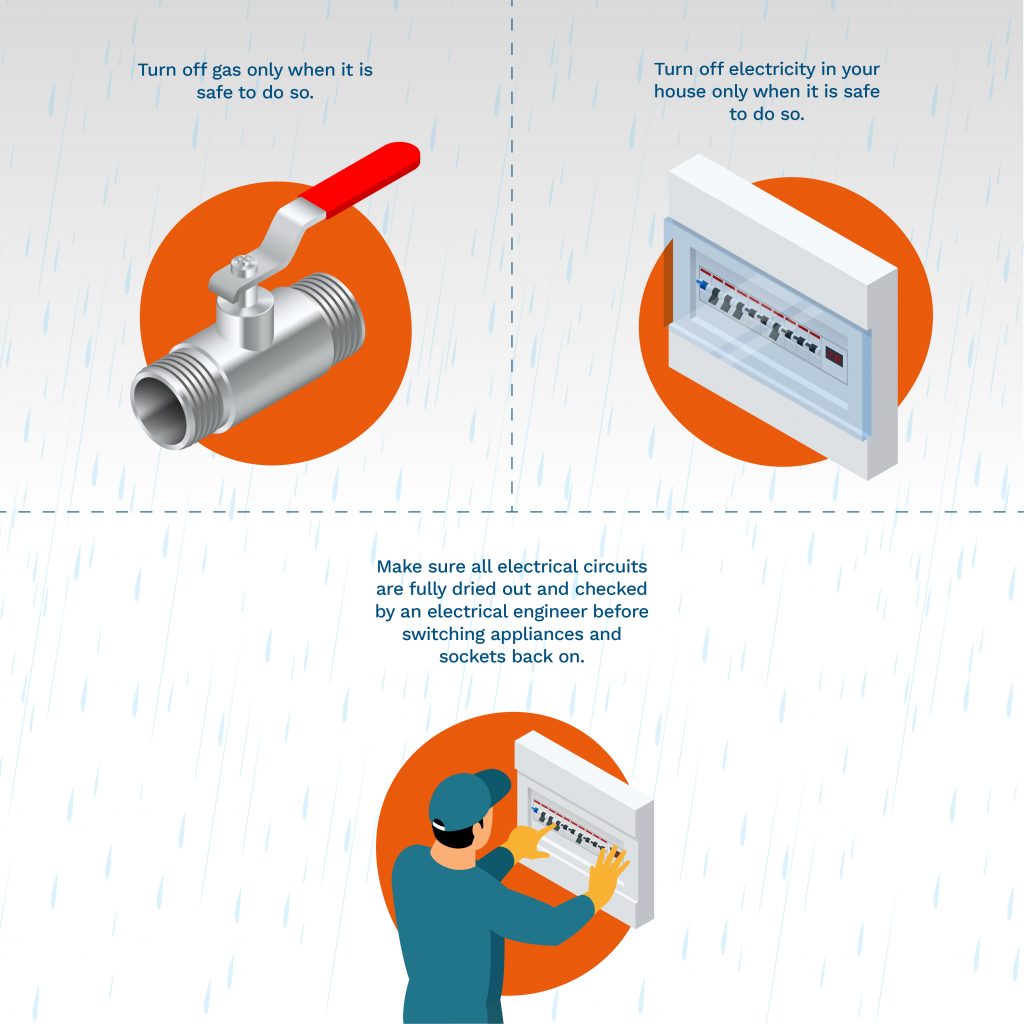What to Do Before, During and After a Flood? (Expert Guide)
If you’re not quite sure what the best course of action is before, during or after a flood, this guide will help prepare you to make the right choices for you, your family and your home.
This expert guide on what you should do before, after and during a flood covers:
- How to prepare yourself, your family and your property for a flood
- What to do during a flood
- What to do if your home or surroundings have been flooded
1. How to prepare yourself, your family and your property for a flood
Some of the most helpful things you can do to prepare for a flood are:
- Buy Hydro Snakes or Hydro Sacks to stop water from entering your home
- Move family, pets and valuables to a safe place
- Turn off gas and electricity
- Prepare an emergency bag that includes items like food, water, medicine and insurance documents
- Put together a list of helpful numbers
- Know about your local relief centres and evacuation routes
Buy Hydro Snakes or Hydro Sacks to stop water from entering your home
The Hydro Snake creates a highly effective barrier to the threat of floodwater. They are a line of sandbags, each measuring two doorways wide, and can absorb 30 litres of water and inflate to over 30 times its original weight. These can be placed in areas like your garden or front gate.
The Hydro Sacks are a similar size to a regular sandbag, but they only weigh 0.5kg and expand to 15kg once they absorb all the water they can. This makes the Hydro Sack extremely useful to place in front of a doorway or in the hallways of your home if you notice flood water coming in. These products have been tested in real-life flooding events and are guaranteed to offer you the best defence against water entering your home.
Move family, pets and valuable to a safe place
In the case of an emergency it’s obvious to prioritise your family. If flooding is imminent, make sure to move your family, pets and any valuables that are easy to carry upstairs, or to a high place with means of escape.
Turn off gas and electricity
Make sure your gas, electricity and water supplies are all turned off if it is safe to do so. DO NOT touch any sources of electricity if you are standing in flood water or flood water is about to enter your home.
Prepare an emergency bag
An emergency bag is important to have for any natural disaster which might occur in your area. In the case of a flood, it is best to prepare an emergency bag with the following items:
- Dried food
- Fresh bottled water
- Any medication required for you and your family
- Insurance documents for items which may be damaged in the event of a flood
Put a list together of helpful numbers
It's important to put together a list of useful numbers to prepare for any emergency that may come from a flood and put it in your emergency bag. Some important numbers may include:
- Environment Agency Floodline
- Local authority emergency helpline
- Insurance company 24-hour number
- Family and neighbours
- Work phone numbers
- Doctors surgery
- Local police station
- Electrician, builder, plumber
- Local hotel or B&B
Know about your local relief centres and evacuation routes
If you live on a flood plain or somewhere that has previously been known as a flood risk in the past, it’s important to learn where your local relief centres are and any evacuation routes that are already in place in your area. This information can be found online or by calling either the Environment Agency Floodline or your local authority’s emergency helpline.
2. What to do during a flood
During a flood you can:
- Focus on the safety of you and your family
- Fill jugs and saucepans with clean water
- Defend property with a puddle buddy
- Cooperate with the emergency service
- Stay alert to localised flooding
- Help stop water entering your home
Focus on the safety of you and your family
Family comes first in any emergency or disaster. So, make sure your family and any pets are moved upstairs or to a high place with means of escape. If the emergency services say to leave your home, refusing to do so will put your family at risk. Make sure everyone has water, medicine and warm clothes.
Fill jugs and saucepans with clean water
If you are aware that flood water is coming, it is important to fill any jugs, saucepans and any other large water holding devices with fresh clean water. It is not told how long your water may remain turned off or undrinkable after a flood has occurred. Clean water is pivotal to staying safe during an emergency.
Defend property with a puddle buddy
Only when it is safe to do so should you attempt to defend your property with a puddle buddy. The puddle buddy is a new generation residue pump, designed to start pumping at a very low water level. The puddle puddy flood kit comes with a water pump, quick fit hoses, floodsax and carry cage which can be used to filter debris and leaves. Only use when safe to do so.
Cooperate with the emergency services
If the emergency services tell you to evacuate during flooding make sure you cooperate. During a flood, you should always be ready to evacuate from your home if told to do so. Call 999 if you’re in immediate danger and, in the meantime, stay in a safe place with means to escape. Remember - flood water is dangerous!
Stay alert to localised flooding
This is also known as ‘surface water flooding’. This usually occurs when drainage systems are unable to cope with the heavy rainfall. You can find daily flood risk forecasts online as the emergency services cannot give direct warning for this type of flooding.
Help stop water entering your home
As localised flooding can happen anywhere, it's important to help stop flood water from entering your home at any point. Put plugs in sinks and baths and weigh them down with a sandbag. It’s important to block any passage where water could get through.
3. What to do if your home or surroundings have been flooded
After a flood it's important to do the following:
- Photograph or video record all property damage prior, during and after clean up
- Ask the insurance company questions
- Be careful. There could be dangers hidden below water and structural damage to your property
- Check the electrics are off
- Pump water out using a flood kit
- Hose down and disinfect areas
- Prepare your property for the future
Photograph or video record all property damage prior, during and after clean up
Always make your own record of flood damage. Take photos and videos of your damaged property. List the damage to your property, belongings and valuables as this can help with the insurance claim. You can also use permanent ink to mark on the wall how high the flood water got to, do this in every room affected.
Ask the insurance company the following questions
- How long will it be before the loss adjuster arrives?
- Should I clean my property myself?
- Does my insurance policy cover perishable goods? If so make a list of foods you had to throw away
- Can you confirm whether you will pay for any service or equipment you need?
Be careful, there could be dangers hidden below water
There may be hidden dangers in the flood water like sharp objects and pollution. Flood water can contain sewage, chemicals and waste so you should always wear waterproof clothes, wellington boots and a face mask. Wash your hands thoroughly if you touch flood water. Flood water could also have caused structural damage to your property so be careful when moving around your home.
Hose down and disinfect areas
You can disinfect and clean your house using products you may already have. A garden hose is an example of a useful cleaning tool. Flood water may have damaged and dirtied your home so use a hose to spray down walls and furniture. Do not use high pressure hoses as they can blast contaminated matter into the air. If you are drying your home, keep doors and windows open.
Check electrics are off
Make sure that your gas and electrics are turned off. If your electricity supply was not already switched off at the mains, get a qualified person to do this for you. DO NOT touch sources of electricity when in flood water. If flooding is becoming more prominent in your area, perhaps talk with an electrician about raising your electrical sockets to at least a height of 1.5 metres above ground floor level.
Pump water out using a flood kit
You can get water out of your property by using a flood kit. This is done with a pump and generator. Generators can produce carbon monoxide so you should always position generators outside in open air. Only pump water out of your home when you notice the flood levels outside are beginning to be lower than the water level inside. This helps reduce the risk of structural damage to your house.
Prepare your property for the future
There are things you can do to prepare for a future flood. Instead of installing carpet on the ground floor, consider laying ceramic tiles and using rugs. Use lime plaster on the walls. You could have your boiler moved upstairs. Replace any wooden door or window frames with synthetic material.
Free Advice
If you’re struggling for advice regarding protecting your home from flooding, ring our dedicated experts on 0800 112 3134 or 0333 577 3134. We’re open Monday to Friday 07:00 - 17:30 and Saturday 08:30 - 12:30.


